Physical Address
304 North Cardinal St.
Dorchester Center, MA 02124
Neoplasms arising from meningothelial (arachnoidal) cells; are usually attached to the inner surface of the dura mater (dural-based tumors)
Comprise about 25% to 30% of primary intracranial tumors
Incidental finding 1.4% at autopsy
All age groups affected; most common in middle-aged to elderly patients; peak in fifth to seventh decades
More common in females (F : M ratio ranges from 2 : 1 to 3 : 1); F : M ratio is 10 : 1 for spinal cord meningiomas
Usually sporadic; multiple in about 10% of cases
May arise secondary to radiation exposure; both low dose and high dose
Multiple meningiomas may arise with neurofibromatosis type 2 (NF2)
Chromosomal abnormalities include deletion of chromosome 22
Slow-growing tumors; symptoms result from location and compression of adjacent structures; headache and seizures are the most common presenting symptoms
Most commonly found in intracranial, intraspinal, or orbital locations
Intracranial locations: cerebral convexities (50% along sagittal sinus), olfactory grooves, parasellar/suprasellar, petrous ridges, sphenoid ridges, tentorium, posterior fossa
Rarely located in intraventricular or epidural spaces
Extra-axial, intradural location most common in spinal cord
Most meningiomas are WHO Grade I and are generally treated by gross total resection; may recur if not complete excised
Radiation therapy or radiosurgery may be used for recurrent tumors or for small tumors in surgically inaccessible areas (i.e., cavernous sinus)
MRI typically shows a circumscribed, isodense, contrast-enhancing, dural-based mass with classic “dural tail” sign (enhancement of dura adjacent to tumor)
May have peritumoral edema resulting from vascular compromise
CT scan may demonstrate tumor calcification or bone formation
Well-demarcated, firm, rubbery, yellow-tan, round to lobulated mass attached to dura
Usually compresses adjacent brain or spinal cord
May invade skull and cause hyperostosis (thickening of the cortical bone)
General features of the most common meningothelial variant:
Lobules of mostly uniform cells arranged in a syncytium
Meningothelial whorls and psammoma bodies are classic
Bland, oval nuclei, and fine chromatin that may demonstrate central clearing
May have nuclear pseudoinclusions
Many variants exhibit a wide range of morphologic appearances (see the next three topics)
Immunoreactive for vimentin and epithelial membrane antigen (EMA)
S-100 variably reactive but usually not prominent
Progesterone receptor expressed in about 60% of cases (most often in women)
Metastatic carcinoma
Schwannoma
Solitary fibrous tumor
Sarcoma
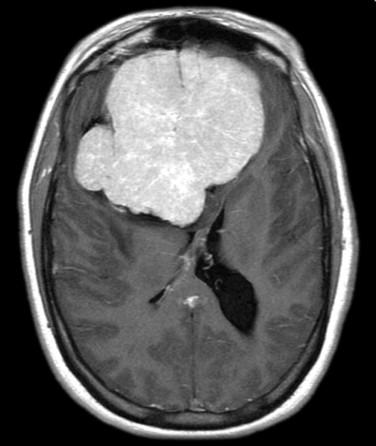
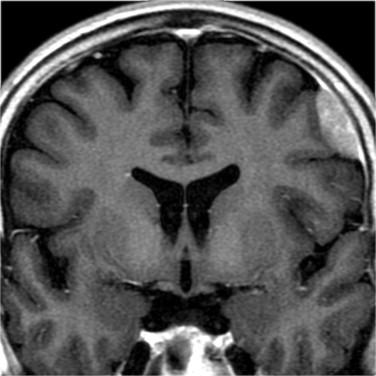
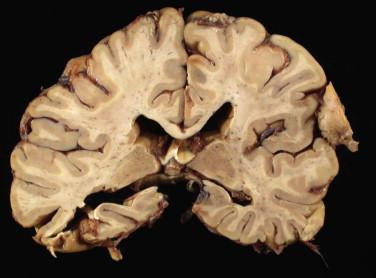
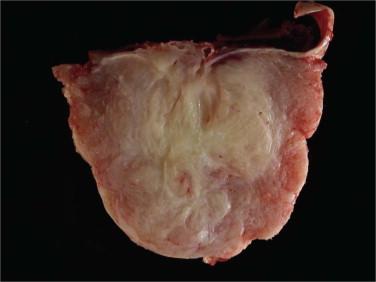
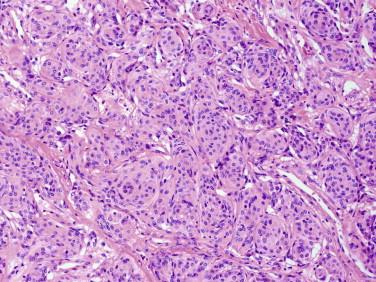
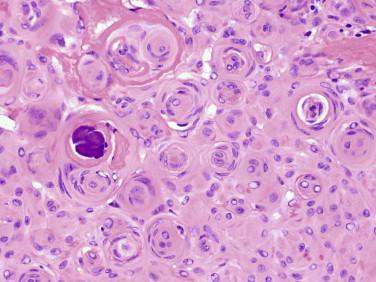
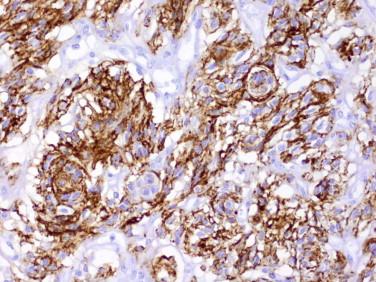
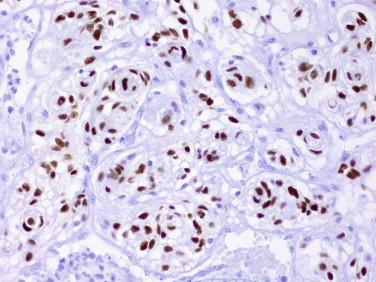
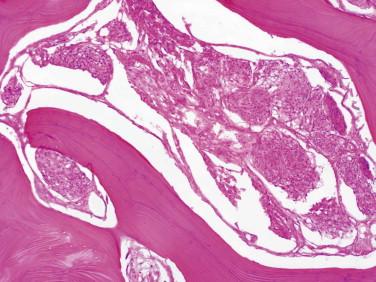
World Health Organization (WHO) Grade I variants include meningothelial, fibrous (fibroblastic), transitional (mixed), psammomatous, angiomatous, microcystic, secretory, lymphoplasmacyte-rich, metaplastic
See previous topic, Meningiomas: Overview and General Characteristics, for details
Similar to meningothelial variant
General symptoms result from location and compression of adjacent structures
Headache and seizures are the most common presenting symptoms
Psammomatous meningiomas are typically found in thoracic spinal region of middle-aged women
Surgical excision in most cases
Become a Clinical Tree membership for Full access and enjoy Unlimited articles
If you are a member. Log in here